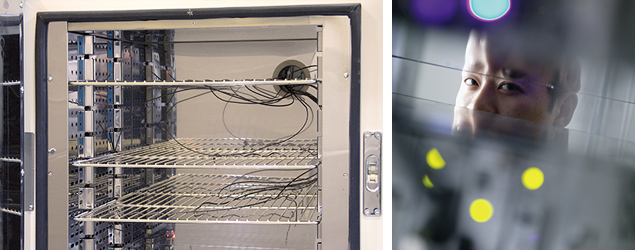Laboratory ovens are critical in many production processes. So, keeping these ovens running at peak performance levels optimizes production. Many companies, however, fail to maintain lab ovens in proper working order. Instead, they wait for them to break down, then fix them. That slows production and impacts quality. It also costs companies time and money.
Laboratory oven preventive maintenance keeps the lab ovens running reliably, decreases unplanned downtime, lowers the risk of breakdown, and extends their lives. Ultimately, preventive maintenance comes down to saving money. Studies show that companies can save anywhere from 12% to 18% performing preventative maintenance on equipment over companies that use reactive maintenance.
Cleaning Laboratory Ovens
How often you clean laboratory ovens depends on how they’re being used. Follow all safety measures when cleaning an over, such as switching off the oven and allowing it to cool completely. Also, do a wipe down of the laboratory oven’s outsides daily and a deep cleaning of the oven regularly. If you’re in a laboratory environment, leave the area in a clean, tidy state when you’re done cleaning the oven.
If you’re sterilizing a part or a component in your oven, cleaning it is even more vital. The last thing you want is dust or dirt creeping into the application process—especially if you’re manufacturing electronic components for equipment like pacemakers, camera modules, and aerospace controls. These items must work at optimal performance levels.
Inspecting and Maintaining Lab Ovens
Inspect laboratory ovens first before using them in production processes to ensure they’re in good working order. Knowing what to inspect in a lab oven—and when—is critical. Below are some key components in lab ovens you should inspect:
Electrical components
Dirty electrical components don’t dissipate heat well, causing these components to heat up and fail prematurely. Dirt and dust can also be conductive, which can cause heaters and electrical circuits to short out and fail. Cleaning the electrical components of your laboratory oven regularly optimizes performance.
Safety features
Inspect these features thoroughly and regularly. The inspection should include things like over temperature limits, airflow switches, and purge timers. If there’s a problem with these features or they’re not working correctly, replace them. Otherwise, the oven could become dangerous to operate.
Mechanical Components
Over time, mechanical components, like door seals, shaft seals, motors, and so on—wear out. That can cause a laboratory oven to break down. A ripped door seal, for example, can cause temperature uniformity problems. Inspect the mechanical components of your laboratory oven often to ensure they’re in good condition and operating correctly.
Oven calibration
Many of today’s processes require accurate oven temperatures. Inaccurate temperatures could cause failed processes and scraped parts or products. While temperature controls and safeties are typically accurate, oven calibration may be off. Check the calibration of your laboratory oven regularly. That will tell you if the oven is achieving the correct process temperatures for your application.
Creating a Preventive Maintenance Plan for Lab Oven Care
Developing a preventive maintenance program is practical and productive. A good PM program includes the processes, guidelines, logs, and tools you’ll need to help you execute critical maintenance tasks. It also includes a sound preventive maintenance plan.
Creating a PM plan, however, can be a challenge if you’re new to it. Below are seven critical steps you want to build into any PM plan:
- Establish and prioritize program goals
- Generate KPIs and commit to reaching them
- Leverage the right technology and equipment
- Make sure your PM triggers are accurate.
- Train your staff to implement activities
- Build a solid PM checklist of activities.
- Fine-tune your plan when necessary
Creating a PM checklist helps you track key performance indicators (KPI), like mean time to repairs or percentage of PM compliance. It also helps you analyze your program’s impact.
Despatch offers pre-built checklists to help you inspect your laboratory ovens. You can go to this web page here to download a checklist. You may also want to use computerized maintenance management software (CMMS) to help with your preventive maintenance efforts.
Laboratory ovens are key components in many production processes. Keeping them clean and in good working order optimizes production, employee safety, and reliability. It also extends their life. Knowing when—and where—to conduct lab oven care, however, is the secret to having an effective preventive maintenance program. That, in turn, can help you achieve the ultimate goal of PM—saving money.
Some maintenance tasks require qualified technicians. If you need assistance maintaining your laboratory oven, Despatch can help. For more information, contact us at 952-649-6529 or make use of the contact forms on our website.






